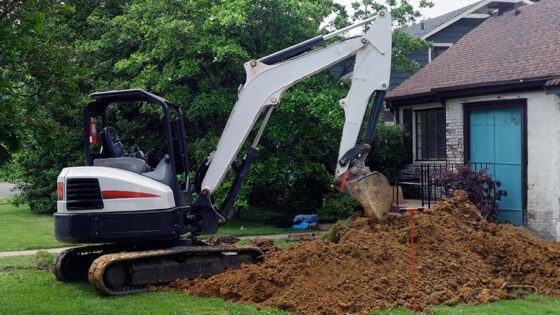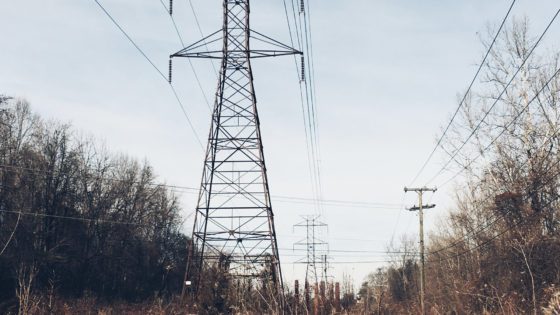Eminent domain ruling from the United States Supreme Court may expand protections for property owners
In June of 2021, the United States Supreme Court ruled on Cedar Point Nursery v. Hassid, one of the most important eminent domain cases in recent years. In a 6-3 decision, Chief Justice John Roberts wrote the Court’s opinion joined by Justices Thomas, Alito, Gorsuch, Kavanaugh, and Barrett.
In the majority’s opinion, the Court ruled that a California state regulation that granted labor organizations the right to take access to an agricultural employer’s property to solicit support for unionization was a per se physical taking which requires just compensation under the 5th and 14th Amendments to the US Constitution.
This decision may very well mark the beginning of an ideological shift toward greater protections for property owners against local, state, and federal governments. To understand the importance of this case to property owners nationwide, we should start at the beginning.
Understanding the background of Cedar Point Nursery v. Hassid – an easement issue
At first glance, this case may seem like it is a labor relations case dealing with when a union can talk with workers. California passed the California Agricultural Labor Relations Act of 1975, giving agricultural employees a right to self-organize and prohibiting an employer’s interference with that right.
The Agricultural Labor Relations Board then created a regulation that included “the right of access by union organizers to the premises of an agricultural employer,” and this right of access was guaranteed for up to four 30-day periods in one calendar year. Essentially, the government was giving the unions what is called an easement in gross.
What is an easement in gross?
We generally think of easements as a piece of the land that someone who doesn’t own the property is allowed to enter or use. For example, Neighbor A, who is landlocked, may purchase an easement over Neighbor B’s land to place a driveway. Neighbor A does not own the land under the driveway and could not use it for any purpose they want. Typically, this would be purchased as an easement appurtenant, meaning the right to use the easement attaches to the property benefitting from the easement, and the easement rights would transfer along with the sale of the property.
However, an easement in gross is a less well-known type of easement that does not benefit any specific piece of land, and instead benefits a particular individual or entity. If Dan owns land with a pond on it and Sue purchases the right to fish that pond, Sue has purchased an easement in gross. The easement in gross would allow Sue to take actions on Dan’s property reasonably necessary to fish the pond, but would not allow unrelated activities and would not require Sue own a piece of property touching Dan’s.
Physical v. Regulatory taking – the compensation question
In the case before the Supreme Court, Cedar Point Nursery was a strawberry grower in California with 400 seasonal workers and 100 full-time workers. The California regulation granted the unions an easement in gross by allowing them to physically enter the property to talk to workers.
After several run-ins with the labor unions, Cedar Point filed a federal lawsuit arguing that the regulation was a per se physical taking under the 5th and 14th Amendments. Both the District Court judge and the 9th Circuit Court of Appeals ruled against the farm, who then appealed to the US Supreme Court.
Physical takings in eminent domain: Property owners entitled to fair compensation
There are two major categories of takings by the government: physical takings and regulatory takings. Physical takings are what people usually think of when they hear “eminent domain” or “condemnation.”
In physical takings, the government is taking a property right by physically intruding onto the land and must fairly compensate the property owner. For example, when the North Carolina Department of Transportation wants to widen a highway, they physically intrude upon the land. These are usually obvious cases where the government will owe the property owner compensation for the taking.
Regulatory takings in eminent domain: No compensation…or is there?
The other form of taking, regulatory, is not so clear-cut. For example, suppose Buncombe County only allows a piece of land to be developed for a single-family residence. In that case, they are preventing the property owner from using the land however they want – say to build a gas station or a hotel.
Is the government taking a property right through this regulation? Yes. Is the government taking a compensable property right, though? Most likely, no. The Supreme Court issued an opinion in Penn Central Transportation Co. v. New York City, 438 US 104 (1978), that created a multi-factor balancing test to determine whether a property owner was entitled to compensation in a regulatory taking.
Supreme court sets a precedent: Some regulatory takings may be compensable
In this case, the Ninth Circuit Court of Appeals implied that the government did not owe the property owner any compensation because it caused the taking through a regulation. The Supreme Court, however, clarified that the Ninth Circuit was incorrect. If the government uses a regulation to allow someone to physically come onto the private property who otherwise could have been excluded, then the government must provide just compensation.
The Supreme Court has long held that the right to exclude a person from your property is fundamental to property rights. Here, the California government created a physical intrusion onto private property on behalf of the union organizations. Because it was a physical intrusion, the Supreme Court ruled that a per se physical taking had occurred, and the property owners are entitled to just compensation.
I believe it is important to highlight that eminent domain law does work differently than many areas of Constitutional law. Most of the time, the Supreme Court rules on whether something is constitutional or unconstitutional. That was not the question here. It is long-settled that the government has a sovereign right to take private property for a public purpose. The question is whether it is a taking that requires just compensation. In this case, the government will be required to provide just compensation to all California farms impacted by the regulation.
Tangled webs: Regulations may violate landowner rights, and must be challenged
Local, state, and federal governments issue many thousands of regulations. Between 1995 and 2016, Forbes estimates that the federal government issued nearly 90,000 regulations. These regulations cover all kinds of topics, from criminal acts to land use. Most of these will not amount to a compensable taking.
However, if your property has been impacted by a regulation that you believe goes beyond mere inconvenience and deprives the property of economic value, I would highly recommend speaking to one of our attorneys at the NC Eminent Domain Law Firm.
If you would like to read the entirety of the opinion, including a concurrence and a dissent, you can find it on the Supreme Court’s Syllabus of the case.



